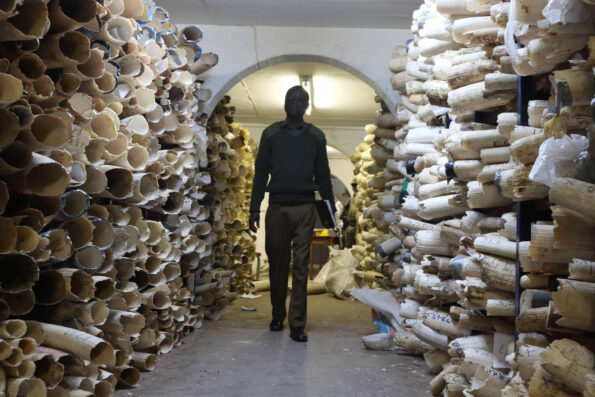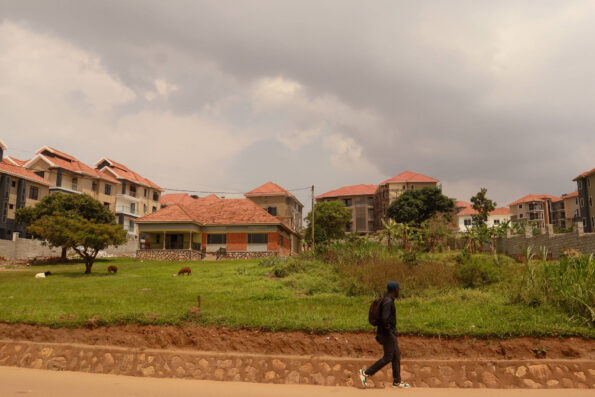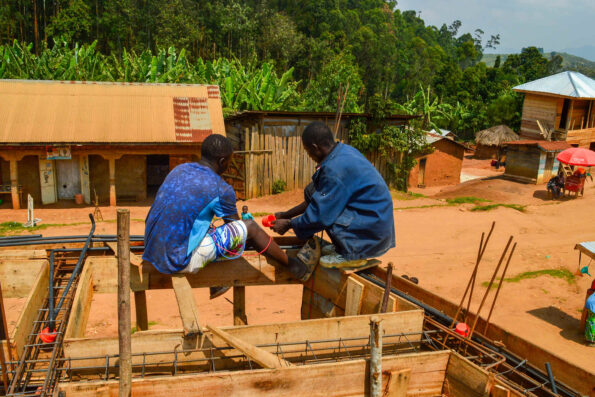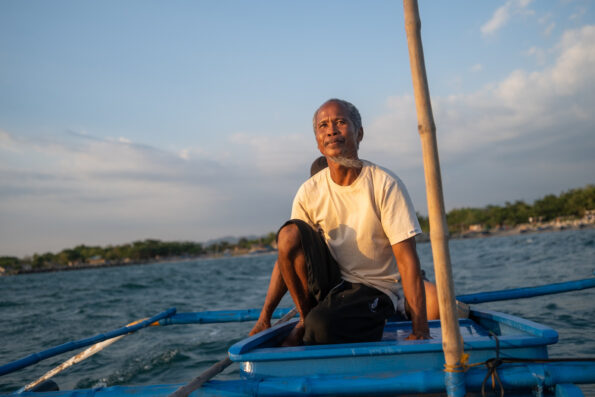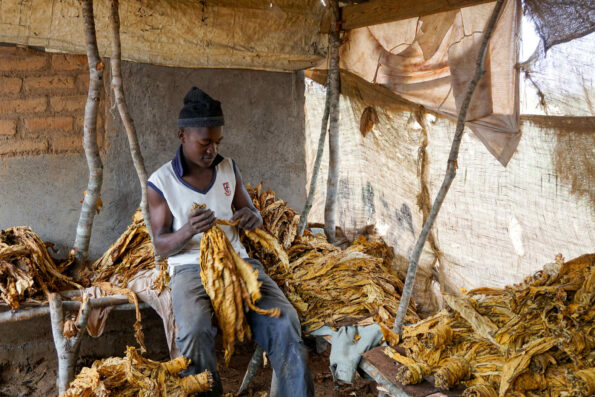
Manori Wijesekera, GPJ Sri Lanka
Workers at Sirio Ltd., a company that makes lingerie for European companies, perform various steps in the sewing process in their main production room in Badalgama, Sri Lanka.
SEEDUWA, SRI LANKA — Wasana Dilrukshi, 20, is doing the one job she never wanted to do: working in a clothing factory.
After failing her 10th-grade exams, Dilrukshi wanted to work in a beauty salon. But her mother, a single parent, couldn’t afford to pay for the beauty course.
“I have seen my mother and sister work in factories,” Dilrukshi says. “I have heard my mother talk about how she gets yelled at, the problems other workers face.”
After many months of searching for other work, Dilrukshi gave in to the pressure from her mother and started working in mid-August at a subsidiary of Bratex Pvt Ltd., a major supplier for Fruit of the Loom. It’s also the factory where her older sister works.
Just a few weeks into her new job, Dilrukshi says she is terrified when she approaches the two-story gray building. Once inside, the bright, fluorescent lights and endless rows of humming sewing machines seem impersonal and cold to her.
The worst part, she says, is the monotony. Women work at their stations, sewing hem after hem, cutting endless shapes out of fabric or ironing heaps of clothes. Supervisors pace from worker to worker, monitoring production and berating those who are slow or make mistakes, she says. It’s a long way from the friendly beauty salon filled with bubbly customers and trendy music that she had once dreamed about.



Instead, she spends her days cutting round shapes for what will become a bra. As she cuts the circles, she places them into bundles and then into a plastic container. Once she has cut 40 circles, she bundles them together. Once she has collected 20 bundles, she moves the bin to a shelf where another machine operator takes the shapes and molds them into bra cups, using a special, heated machine.
She is responsible for 120 bundles per hour, which means cutting 80 circles per minute.
Dilrukshi, who is still in a two-month probation period, says she doesn’t like the work but feels confident that she can make some money while working here.
She says the human-resources staffer who interviewed her for the job said she could earn up to 30,000 Sri Lankan rupees ($196) per month if she met her production targets and didn’t miss a single day of work. Some of her co-workers cut 160 bundles per hour and make even more money. She says she expects that her quota will increase soon, too.
These wages are far above the legal minimum wage of 13,500 rupees ($88.36) that Sri Lanka mandates for apparel-industry workers. Clothing factories throughout the country are offering increasingly competitive wages and benefits, like free meals and transport, in an attempt to thwart the growing labor shortage plaguing the garment industry here.
Seventeen percent of factory jobs in Sri Lanka’s apparel sector are unfilled, according to a study published by Griffith University in 2016, the first time the labor shortage has been quantified.
Globally, clothing manufacture is a $3 trillion industry, and Sri Lanka supplies less than 2 percent of the global apparel market, according to a 2016 World Bank study. But the island country is home to many factories that produce higher-end products for global brands like Calvin Klein, Gap, Giorgio Armani, Nike, DKNY and Victoria’s Secret.
The Sri Lankan economy earned $4.8 billion from apparel exports in 2016, according to the Central Bank of Sri Lanka, and apparel has become the country’s largest export, contributing to 47 percent of all exports in 2016.
The apparel sector directly employed nearly 500,000 people in Sri Lanka across more than 3,500 establishments in 2014, according to a report by the Department of Census and Statistics.
But as Sri Lanka’s economy and per-capita income grow, the aspirations of the workforce are changing, says Anushka Wijesinha, chief economist at the Ceylon Chamber of Commerce.
“I think what’s unusual is we really can’t quantify at what rate the aspirations are changing,” Wijesinha says. “But my sense is that aspirations are changing faster than the transformation of the economy.”



Sunimalee Madurawala, a research officer with the Institute of Policy Studies of Sri Lanka and a co-author of the Griffith University study, says one big change is that young women in general are more educated now than in the 1990s, when apparel-industry work began to boom here.
By 2015, nearly two-thirds of apparel workers had completed their O-level exams, equivalent to finishing the 10th grade, according to a report in the Sri Lanka Journal of Social Sciences. And 36 percent had completed their A-level exams, equivalent to finishing the 12th grade and used as college entrance exams for state universities. Less than 2 percent of the 1,878 workers surveyed had not taken the O-level exams.
“With higher educational qualifications, young girls don’t want to come to a garment factory and be a sewing operator,” Madurawala says. “They look for other jobs where they can work on computers or they can interact with people.”
The labor shortage in the apparel sector is most acute among machine operators, who are typically women and form the majority of the sector’s workforce, she says.
The rapid expansion of clothing factories in the 1980s and 1990s led to a large migration of workers, especially young women, to export-processing zones, Madurawala says.
The zones attracted foreign-owned factories to set up shop in Sri Lanka with low taxes and subsidized utilities. The zones also drew thousands of young female workers who left their homes in small villages in remote areas to live in rented rooms and crowded boarding facilities near the processing zones.
“The newfound freedom in living away from their families – and the economic empowerment they experienced – led to these workers gaining a reputation of loose living,” Madurawala says, adding that some of the female workers are known to have boyfriends and engage in sex outside of marriage, a taboo in Sri Lanka.
Female factory workers became known as “Juki girls” for the brand of machine frequently used in the factories, Madurawala says. This term soon became an insult, referring to young women who had sex out of wedlock.
The social stigma is exacerbated by the poor working conditions in some factories, says Chamila Thushari, the program coordinator at the Dabindu Collective, a nonprofit organization working with women in the sector.
“The girls work under very stressful conditions,” Thushari says. “They get scolded and yelled at all the time. They work like animals, without stopping, doing the same small task again and again. Their hourly targets are increased all the time – they are pushed to the limit to keep producing more and faster.”
Felix Fernando, chairman of the Sri Lanka Apparel Exporters Association, says the reputation of the industry’s work environment is so negative that even he was initially hesitant to join the business.
Fernando is now CEO and a director of two clothing factories, Sirio Ltd. and Alpha Apparels, which have a combined workforce of 4,200 workers, who mostly make garments for high-end European lingerie brands, he says.
“A job in a garment factory is what your teacher threatened you would have to resort to, if you didn’t study well,” Fernando says. “Many families refused to accept a bride who worked in the apparel sector because of the bad reputation they were supposed to have.”



Many of the machine operators don’t plan to stay long in the industry, Thushari says. They want to earn enough to pay back a family loan or to earn for their dowry and wedding expenses. Some leave as soon as they complete five years of employment, when they become eligible for a gratuity allowance, which pays former employees a half-month salary for every year of service at a company. Others can’t last long.
“Now they don’t wait for more than three years; they are worn out and exhausted by that time,” Thushari says.
She admits that the average take-home pay of about 25,000 rupees ($164) in small factories or about 35,000 rupees ($229) in larger factories is an above-average wage for an unskilled worker.
“Their pay is higher than the average for their skills, yes – but the workload is also far above average,” Thushari says. “They don’t get a salary that they can be happy with for the extremely hard work they do.”
Dilini Jayamali says she started looking for another job just a few weeks after she started working in 2011 as a machine operator at Brandix, a large apparel manufacturer.
Jayamali, 30, says she realized that working at the factory was not something she could do for the long term, even though she earned a salary of about 35,000 rupees ($229) and benefits such as free meals and transportation.
“It’s not a job you can do every day for the rest of your life; it’s very tiring,” she says.
Her hourly target was around 120-150 sewn pieces, which varied based on the design. She usually did one task repeatedly until that order was completed; she worked from 8 a.m. to 6 p.m., six days a week.



“It wasn’t a bad place to work, it was a good income and there are many girls who are eager to work there,” Jayamali says, acknowledging the good pay. “But at the factory we are at the machine, and you have to keep sewing and sewing, one piece after another.”
In April 2014 she left the factory to work as an attendant in the maternity ward of the Colombo North Teaching Hospital in Ragama. The single mother of a 10-year-old son, Jayamali says her income dropped to 28,000 rupees ($183) a month at the new job, but the work is easier. Moreover, it’s a government-sector job, which means she will receive a state pension.
“I earn less than (at) the factory, but I have more free time and I am happier, I think,” Jayamali says.
Fernando says that apparel manufacturers have taken note of worker discontent and are working to correct misconceptions about the industry so they can attract new workers, while also making sure they retain current workers.
“It has become essential for companies to treat workers well. Otherwise, you start losing money – it’s as simple as that,” he says.
The Sri Lanka Apparel Exporters Association has commissioned a local research company to study and report on why workers are unwilling to join the apparel sector, Fernando says. Based on the study’s results, which he expects by November, the exporters association plans to hire an advertising agency to create a public-awareness campaign to correct misconceptions about the clothing sector.
Fernando says many companies are already innovating and finding ways to benefit employees.
Sirio and Alpha Apparels, where Fernando is CEO, introduced a standing, modular production system in 2015 that he says has increased worker productivity by more than 10 percent, the benefit of which has been passed on to workers through an incentive system that offers bonuses for meeting or exceeding quotas. They’ve introduced a new system that allows workers to form small teams, which breaks up the monotony and allows workers to fill in for one another when a team member is absent. And they installed weight-bearing carpets to make standing for long periods more comfortable.
“It’s important to adapt and innovate to make it a better working environment,” Fernando says. “Keeping the worker happy and satisfied and fulfilled is the most important focus, not only for HR but everyone in management.”
Eran Wickramaratne, State Minister of Finance, says the labor shortage is a reflection of the evolution of the Sri Lankan economy.
“I think the apparel sector will continue to be a major contributor in the future, but I think the industry will change with time,” Wickramaratne says. “In Sri Lanka the industry will migrate from a lower-end garment to a higher-end garment. So that’s one change that will come. From a value point of view, the sector can continue to grow, but it might still differ in terms of what they produce.”
But even as the manufacturing sector evolves and grows, workers still say they hope their time working in the apparel sector will be short-lived.
Just a few weeks into her job cutting fabric circles to make bras, Dilrukshi says she is already looking for another job.
“I think if you can, you should not go to work in a garment factory; you should look for some other job where you will have freedom and you will be valued in some way,” she says. “I want a peaceful life, and I want a secure future. I don’t think I will find that in a garment factory.”
Manori Wijesekera, GPJ, translated three interviews from Sinhala.


